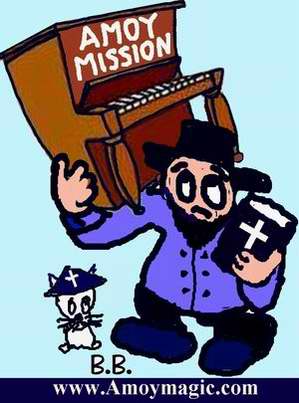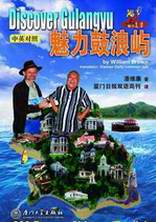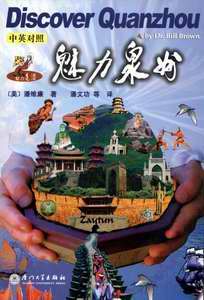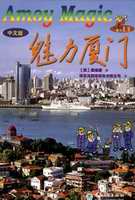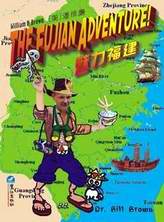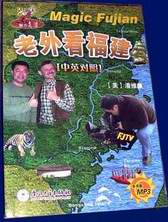![]() Click
to
Access
Click
to
Access
AMOY MAGIC SITE from
OUTSIDE China
![]() Click
to Access Amoy
Magic Site from
Click
to Access Amoy
Magic Site from
INSIDE
China ![]()
TRAVEL LINKS
![]() Xiamen
Xiamen
![]() Gulangyu
Gulangyu
![]() Jimei
Jimei
![]() Tong'an
Tong'an
![]() Jinmen
Jinmen
![]() Zhangzhou
Zhangzhou
![]() Quanzhou
Quanzhou
![]() Wuyi
Wuyi
![]() #1Fujian
Sites!
#1Fujian
Sites!
![]() Fujian
Foto Album
Fujian
Foto Album
![]() Books
on Fujian
Books
on Fujian
![]() Readers'Letters
Readers'Letters
![]() Ningde
Ningde
![]() Zhouning
Zhouning
![]() Longyan
Longyan
![]() Sanming
Sanming
![]() Putian
Putian
![]() Bridges
Bridges
![]() Travel
Info,
Travel
Info,
![]() Hakka
Roundhouses
Hakka
Roundhouses
![]() Travel
Agents
Travel
Agents
MISC. LINKS
![]() Amoy
People!
Amoy
People! ![]()
![]() Darwin
Driving
Darwin
Driving ![]()
![]() Amoy
Tigers
Amoy
Tigers
![]() Chinese
Inventions
Chinese
Inventions
![]() Tibet
in 80 Days
Tibet
in 80 Days![]()
![]() Amoy
Vampires!
Amoy
Vampires!
![]() Dethroned!
Dethroned!
![]()
![]() Misc.Writings
Misc.Writings
![]() Latest
News
Latest
News
![]() Lord
of Opium
Lord
of Opium
![]() Back
to Main Page
Back
to Main Page
![]() Order
Books
Order
Books![]() Xiamenguide
Forum
Xiamenguide
Forum
Note:
Please click thumbnails for larger photos
![]() Hills'
Photo Album!
Hills'
Photo Album!![]() Bio
of Jessie M. Johnston
Bio
of Jessie M. Johnston
![]() Oltman's
1942 REPORT ON CONDITIONS IN AMOY CHINA
Oltman's
1942 REPORT ON CONDITIONS IN AMOY CHINA
Click Photos for Larger Images
Brief Intro to Dr. Oltman Dr. Oltman served at the Blauvelt Memorial Hospital, replacing Dr. Harold Veldman, who returned to the U.S. for health reasons in 1930. Oltman served in the Amoy area until World War II, and returned to China after the war. As a Major, Dr. Oltman also served as a military medical officer in the U.S. base in Kunming. Oltman returned to the Fagg Memorial Hospital in Leng-na in 1947. Dr. Clarence Holleman and Oltman worked together to get the hospital up to snuff again. Members of the "First Presbyterian Church in Newton, Kansas (where Oltman had once practiced) provided funds for surgical instruments and supplies." (De Jong 1992, p.311-312). Over half of the work performed at Fagg Hospital was charity. Oltman remained there until expelled in October, 1951; he was the last Reformed missionary to leave China. But though he stayed on at the hospital after 1949, he was able to do little work. De Jong quotes Oltman, "I was beat. Not beatne, but I mean, I was in poor health. I think I weighed 119 pounds. My clothes hung like rags on me." (De Jong 1992, p.338. His departure marked the end of 109 years of the Reformed Church of America's mission in Amoy.
REPORT ON
CONDITIONS IN AMOY CHINA
by Theodore V. Oltman, M.D.
(Provided by Jack and
Joann Hill)
Written
on board the S.S. Gripsholm, August 6, 1942
INTRODUCTION: General Situation
On December 8, 1941 there were about seventy American, British, and Dutch
nationals residing in the International Concession of Kulangsu,
an island in the harbor of Amoy. Of these
there were fourteen adult Americans and six American children. Twelve
of the American adults were missionaries (ten belonging to the Mission
of the Reformed Church of America, two of the Seventh-day Adventist Mission).
The other two adults were Mr. L. C, Altaffer, American Vice-Consul and
Mr. G, Sevra, of the U.S. Navy, attached to the American Consulate as
Radio Operator.
Before Dec. 8, 1941 there were no Japanese Military or Naval Forces on
the Island of Kulangsu, The Concession
was governed by the Kulangsu Municipal
Council, composed of one American, chairman, one British subject, one
Dutch subject and two Japanese subjects. However, Japanese influence was
strong, due to the following:
(l) The presence of Japanese Naval forces in Amoy
and controlling all the waters around Amoy.
(2) A number of Formosan police in the Concession police force.
(3) A force of Japanese Consular Police and Plain Clothesmen.
(4) A large Formosan population that terrorized the native Chinese.
For a month and a half before Dec. 8th there were no travel communications
between Kulangsu and the Mainland, which is
held by the Chinese, and is only about 1000 yards across the bay from
Kulangsu. Previous to this-time private
motor boats of the Standard Oil Company, The Asiatic Petroleum Company
and the Reformed Church Mission plyed between the International Settlement
and the Mainland under a "Pass" system imposed by the Japanese
Naval Forces.
THE FIRST
WEEK OF WAR
At 4 A.M. Monday morning, December 8, 1941 armed Japanese Marines crossed
the narrow harbor from Amoy and landed in
the International Settlement of Kulangsu.
With the aid of Consular police and Formosan interpreters began to round
up all American and European Nationals. They proceeded, first to the American
and British Consulates and the residences of the Netherlands Indies and
Hongkong Shanghai Bank officials where they arrested the foreign staffs
at the point of bayonet or pistol end. Before day break a large number
of other Americans and Europeans were similarly routed out of their house
by armed Marines and Japanese Consular Police, and as the day wore on,
all Americans and Europeans except two or three overlooked or exempted
for reasons of health were rounded up. All of these Individuals except
the Consuls were taken to a large building ¡ª an empty Japanese hospital
¡ª the neutrals were registered and released, to return to their homes.
British, Dutch and Americans, men, women and children were forced to remain
in this building with no food and no bedding. Chinese servants were finally
allowed to bring in these necessary things. Armed sentries with fixed
bayonets were on constant guard in the hallways and around the building.
No violence was inflicted on anyone but there was a general indifference
to hardships suffered by women and infirmed people. Mothers with children
were released on the first day and allowed to go home.
On the third day the American doctor was released and allowed to reside
in his own home and go to and from the American hospital, which he was
permitted to continue to operate.
During the six days between Dec. 8 to Dec. 12 various Americans and other
Nationals were taken to the schools, banks or other institutions which
they had supervised and were made to hand over accounts, records and undergo
examinations.
Finally on Dec. 13 all British, Dutch and American Nationals, exclusive
of Consular Staffs were released and permitted to reside in their own
homes and warned not to appear on the streets without special permission.
During the detention period the American, British, and Dutch members of
the Municipal Council were forced to resign.
Upon return to their houses it was evident to the residents that their
houses and premises had been thoroughly searched. Radios, Camera photographic
equipment and firearms had been confiscated. In some cases, receipts for
the confiscated articles were issued. There was some evidence of petty
pilfering by the Japanese searchers. Articles such as, soap, food stuffs
and trinkets being missing. No large scale loss of such articles occurred
except in the case of the American Vice-Consul and the case of Mr. Maclntyre
of the Seventh-Day Adventist Mission, who was not allowed to return to
his home as it was in a strategic area facing the mainland. He sustained
fairly heavy losses in food stores, clothing stolen by the Japanese searchers.
He was permitted to reside in another American residence.
All American, British and Dutch employees of the Chinese Maritime Customs
were discharged but salary was paid them through December.
The American doctor was chosen to represent all Americans in matters of
communications from the various Japanese authorities.
Similarly one Dutch and three British nationals were chosen. These five
persons were given identification arm bands and were free to go around
to the various residences of their own nationals. From time to time they
went to the Japanese consulate or other Japanese offices.
BANKS AND
FINANCIAL
All foreign and Chinese National government banks were closed. On or about
December 23 and for the succeeding three days these banks were temporarily
opened and personal accounts could be drawn on to the extent of $500.
CNC per single account. They were again reopened in mid February 1942
for a period of 4 days. A maximum of $2000. CNC per personal account was
permitted to be withdrawn.
Chinese National Dollars continued to be the medium of exchange. Formosan
Yen were somewhat in use, telegraphic and water bills being payable in
Yen.
Before Dec. 8th three CNC dollars were worth one Yen. The rate gradually
changed and became 9 to 1 in about three months. This was controlled and
fixed each time by the Japanese. This amounted to a deliberate decreasing
of the CNC dollar value. Prices rose proportionally.
At the onset of the war American citizens were as a group well
supplied with money, sufficient to last them for two months or more.
The first bank opening allowed them to draw sums adequate to last
another month. In addition, Chinese friends gave gifts and made
loans so that at no time was the group of Americans pressed for money.
In March 1942 the Japanese consulate required all American, British and
Dutch citizens to report their income and debts from Dec. 8th through
March. On the basis of these reports the Japanese issued money on the
basis of $500. CNC. per month for January, February and March, minus the
reported income for each month, plus sums to cover debts outstanding as
of Dec. 31st. By this some individuals received no money, some such as
heads of families received up to five or six thousand dollars. These sums
were paid on a loan basis, with a note signed by the recipient and the
group represented and written to be payable in the settlement at the end
of the war. It is to be remarked that these loans would have been entirely
unnecessary had the business firms and Missions been able to draw from
their funds in safes and in bank accounts. These accounts however, were
firmly frozen and repeated applications for release were denied by the
Japanese Authorities.
In this manner about $15,000. CNC. and $3,522. US of the American Reformed
Church Mission and $13,000. CNC. of the Seventh-day Adventist Mission
and $6,000. CNC. of the Mission hospital were withheld or appropriated
by the Japanese. The amount of such sums held by American business firms
and the American Consulate is not known by me. Safes of Missions, institutions
and Consulates were sealed and no withdrawals of money was permitted except
in two or three cases where personal cash had been in such safes.
At the middle of May, when the last repatriates left for Shanghai, the
remaining 7 U.S. citizens had enough cash to last six months or more.
They will probably be able to get more money from time to time from Chinese
friends.
INSTITUTIONS AND BUILDINGS AND LAND
All property, residences, Missions schools, the hospital, British, American
and Dutch firms, etc. were taken over and placarded and stated to be the
property of the Japanese. In most cases, Americans, British and Dutch
Citizens were permitted to live in their accustomed houses.
In late December complete inventories of Mission, business and personal
property, lands, buildings, equipment were required by the Japanese Enemy
Property Custodian Committee. All such property other than personal was
declared to be Japanese. Personal property was not allowed to be moved
or sold without special Japanese permission. There were 10 Mission schools
in Kulangsu, teaching about 9,000
pupils. These schools were closed on Dec. 8th. The Japanese reorganized
the school teaching staffs and about two months later opened 5 of these
schools. American, British and Dutch Citizens were naturally excluded
from participation in school administration or teaching. Chinese teachers
were compelled to continue.
The 150 bed Mission Hospital was permitted to run without internal control,
by the Japanese. No Japanese or their sympathizers were on the staff.
Severe restrictions were put on from the outside that prevented patients
from entering the hospital, so that by May first only a skeleton staff
and 20 patients were left. In January the ground floor of the hospital
was taken over as a concentration camp for British Citizens and Neutral
Europeans captured in vessels off the China Coast near Amoy,
in the first week of the war. This group reached fifty four in number.
The hospital was guarded by armed marines and Municipal detectives day
and night.
In the middle of May when the American doctor was forced to evacuate,
the hospital was taken over and closed by the Japanese.
TREATMENT OF THE CHINESE
Chinese of British, Dutch and Filipino nationality were temporarily detained
in the same camp with the ABD white citizens and for the same length of
time. Several school teachers, one nurse and one Christian pastor were
imprisoned for periods of two to fourth months, presumably because pro-American
or pro-Chungking activities. Treatment of the general populace by the
Japanese was one of indifference except for some propaganda in the way
of mass meetings where anti-ABD fulminations were uttered by the Japanese.
Some forced contributions of several thousands of dollars were solicited
from wealthy Chinese.
The attitude of 99% of the native Chinese was friendly and sympathetic
toward ABD nationals.
FOOD
There was rice and wheat flour stored in warehouses and shops sufficient
to last the populace (60,000) of Kulangsu
for about five months. The Japanese commandeered staple foods, fixed prices
and regulated sale of these articles.
TREATMENT
OF AMERICAN CONSULAR STAFF
On December 8th, 1941, Mr. Leland C. Altaffer, American Vice-Consul, and
Mr. George Sevra, Radio Operator were arrested and taken from the Consulate
to the Amoy Club Building in Kulangsu,
where, in company with the British Consul-General, they were kept until
December 30, 1941. They were not provided with food or money. Their Chinese
servants were permitted to bring them food. On December 30 Mr. Altaffer
and Mr. Sevra were sent back to the Consulate and were allowed to live
at first in three rooms on the ground floor, the rest of the building
being sealed off. Later two more contiguous rooms were opened for their
use. They were not permitted to leave the grounds. Armed sentries guarded
the locked gate. Depending on the affability or insolence of the guards,
treatment of the American staff and their servants was accordingly pleasant
or the opposite. At one time on mild remonstrance over the action of one
guard who monopolized space in the kitchen so as to interfere with the
cook's work, the guard flared up, and left the premises to make a report
to the Naval authorities. Messrs. Altaffer and Sevra were that day taken
to Naval Headquarters in Kulangsu,
beaten with leather straps and furiously berated by a Junior Naval officer.
Thereafter no physical violence of marked insolence was exhibited. But
no apology for this unwarranted action was forthcoming.
The American staff had to live on remaining food stores - a fair quantity
of foods and beverages had been stolen by the Japanese and borrowed money
and credit until the 24th of February when money was given them by the
Japanese.
The American group representative was occasionally able to visit Messrs.
Altaffer & Sevra, depending upon the laxity or severity of the sentries.
(The foregoing account of the treatment of Consular officials is in bare
outline as Mr. L.C. Altaffer will have made his own report and account
to the State Department.)
EVACUATION
In the middle of March application forms regarding evacuation were distributed
among ABD nationals. Essentially, it was required to indicate the desire
to be repatriated or the desire to remain (indefinitely?) in Kulangsu,
Amoy. There was no compulsion except in the
case of ABD gov't officials. There was "unofficial" urging to
go. Of the American group, exclusive of officials, six adults, including
one Danish subject, mother of two American children, decided to go, making
a total, including five children, of eleven persons. The prospective evacuees
were permitted to take personal effects, linens, silverware and Yen 1,000.
or its equivalent in other currencies. Before leaving, sale of personal
and household goods by auction was permitted.
Evacuation from Amoy to Shanghai occurred
in two groups, the first group leaving Amoy
April 16, 1942 and the second group leaving on May 14, 194-2, the vessel
evacuating the repatriatees being the S.S' Sungshan Maru. On the day of
the second evacuation the American doctor was called to the Japanese Consulate
and told that he must go. No reasons were given. This was the only case
of forced evacuation. Conditions on the evacuation ship were very poor.
Baggage had to be carried on board by the repatriates; coolies were not
allowed to help. On each trip, about fifty evacuees (including such from
Canton and Swatow) were lodged in a ¡°hold¡±, dirty, dark, and airless
in rainy weather. Food was wretched, one third of adequate quantity, and
service & treatment by stewards and "boys" was insolent
to a degree never before experienced by anyone. Attempt was made each
trip to levy exhorbitant tips. The Japanese captain and officers seemed
indifferent to our treatment. Each trip from Amoy
to disembarkation in Shanghai took seven days.
Respectfully submitted,
Theodore V. Oltman, U.D,
on board S.S. Gripsholm
August 6, 1942
-10-
APPENDIX
American Citizens left in Kulangsu
Amoy:
Rev. H.A. Poppen - American Reformed Church Mission.
Rev. H. M. Veenschoten - ARCM
Miss K.R. Green - ARCM
Miss E. E. Beekman - ARCM
Miss J. Veldman - ARCM
Note: Miss Veldman was Nurse in American Hospital. When American doctor
was forced to evacuate, he requested permission for Miss Veldman to evacuate
also; request was refused.
Rev. B.L. Anderson - Seventh-Day Adventist Mission.
Master Robert Hulse, American, son of British subject. Robt.
Hulse is an invalid; his mother chose to remain with him in Amoy.
(2) Military Dispositions & Activities, December 8th, 1941-to to May,
1942.
Military dispositions on Amoy island could
not be ascertained. The airfield was being improved and enlarged.
In Kulangsu, Local Naval Headquarters
were established in the Hong Kong & Shanghai Bank residence &
grounds on a hill in the northwest quarter of the island. I was in these
grounds several times but saw no artillery emplacements. There were probably
machine gun nests behind these grounds on a rocky eminence.
The western end of the island was a forbidden zone. Artillery and machine
gun emplacements were located there. These faced the nearest point of
the mainland where Chinese machine gun nests and entrenchments were located.
Floodlights were strung along about one half of the island coast and a
system of forced patrol by native Chinese was inaugurated. This precaution
was taken after a raid on January 8th by Chinese from the mainland in
which they killed several marines and a Japanese police.
Japanese Naval vessels entered the harbor very occasionally. Supply ships
came in on the average of two to three a week.
(3) Health Conditions in Amoy & Kulangsu.
Cholera - none for two years, rare sporadic before.
Smallpox - none for one year; rare before.
Leprosy - moderate number of lepers; low incidence (?)
Trachoma - moderate incidence.
Typhus - none.
Tuberculosis - high annual incidence and death rate.
Typhoid - high annual incidence, July to November.
Dysentery, Amebic & Bacillary - endemic.
Malaria - low incidence in Kulangsu;
variable in some small villages on Amoy island.
Water Supply: Good water impounded in an artificial lake on Amoy; carried
in water-boats to Kulangsu and pumped
into reservoirs About 70 (?) fresh water wells in Kulangsu;
many residences have rain water tanks. All types of water must be boiled
for drinking purposes.
Respectfully submitted,
Theodore V. Oltman M.D,
E-mail: amoybill@gmail.com
Snail Mail: Dr. William Brown
Box 1288 Xiamen University, Xiamen, Fujian PRC 361005
TRAVEL
LINKS  Favorite
Fujian Sites
Favorite
Fujian Sites  Fujian
Foto Album
Fujian
Foto Album  Xiamen
Xiamen
 Gulangyu
Gulangyu
 Fujian
Guides
Fujian
Guides  Quanzhou
Quanzhou
 Zhangzhou
Zhangzhou
 Longyan
Longyan
 Wuyi
Mtn
Wuyi
Mtn  Ningde
Ningde
 Putian
Putian
 Sanming
Sanming
 Zhouning
Zhouning
 Taimu
Mtn.
Taimu
Mtn.  Roundhouses
Roundhouses
 Bridges
Bridges
 Jiangxi
Jiangxi
 Guilin
Guilin
 Order
Books
Order
Books Readers'
Letters New: Amoy
Vampires! Google
Search
Readers'
Letters New: Amoy
Vampires! Google
Search
Last Updated: October 2007
AMOY
MISSION LINKS
![]()
![]() A.M.
Main Menu
A.M.
Main Menu
![]() RCA
Miss'ry List
RCA
Miss'ry List
![]() AmoyMission-1877
AmoyMission-1877
![]() AmoyMission-1893
AmoyMission-1893
![]() Abeel,
David
Abeel,
David
![]() Beltman
Beltman
![]() Boot
Family
Boot
Family
![]() Broekema,
Ruth
Broekema,
Ruth
![]() Bruce,
Elizabeth
Bruce,
Elizabeth
![]() Burns,
Wm.
Burns,
Wm.
![]() Caldwells
Caldwells
![]() DePree
DePree
![]() Develder,
Wally
Develder,
Wally
![]() Wally's
Memoirs!
Wally's
Memoirs!
![]() Douglas,
Carstairs
Douglas,
Carstairs
![]() Doty,
Elihu
Doty,
Elihu
![]() Duryea,
Wm. Rankin
Duryea,
Wm. Rankin
![]() Esther,Joe
& Marion
Esther,Joe
& Marion
![]() Green,
Katherine
Green,
Katherine
![]() Gutzlaff,
Karl
Gutzlaff,
Karl
![]() Hills,Jack
& Joann
Hills,Jack
& Joann
. ![]() Hill's
Photos.80+
Hill's
Photos.80+
..![]() Keith
H.
Keith
H.![]() Homeschool
Homeschool
![]() Hofstras
Hofstras
![]() Holkeboer,
Tena
Holkeboer,
Tena
![]() Holleman,
M.D.
Holleman,
M.D.
![]() Hope
Hospital
Hope
Hospital
![]() Johnston
Bio
Johnston
Bio
![]() Joralmans
Joralmans
![]() Karsen,
W&R
Karsen,
W&R
![]() Koeppes,
Edwin&Eliz.
Koeppes,
Edwin&Eliz.
![]() Kip,
Leonard W.
Kip,
Leonard W.
![]() Meer
Wm. Vander
Meer
Wm. Vander
![]() Morrison,
Margaret
Morrison,
Margaret
![]() Muilenbergs
Muilenbergs
![]() Neinhuis,
Jean
Neinhuis,
Jean
![]() Oltman,
M.D.
Oltman,
M.D.
![]() Ostrum,
Alvin
Ostrum,
Alvin
![]() Otte,M.D.
Otte,M.D.![]() Last
Days
Last
Days
![]() Platz,
Jessie
Platz,
Jessie
![]() Pohlman,
W. J.
Pohlman,
W. J.
![]() Poppen,
H.& D.
Poppen,
H.& D.
![]() Rapalje,
Daniel
Rapalje,
Daniel
![]() Renskers
Renskers
![]() Talmage,
J.V.N.
Talmage,
J.V.N.
![]() Talman,
Dr.
Talman,
Dr.
![]() Veenschotens
Veenschotens
. ![]() Henry
V.
Henry
V.![]() Stella
V.
Stella
V.
. ![]() Girard
V.
Girard
V.
![]() Veldman,
J.
Veldman,
J.
![]() Voskuil,
H & M
Voskuil,
H & M
![]() Walvoord
Walvoord
![]() Warnshuis,
A.L.
Warnshuis,
A.L.
![]() Zwemer,
Nellie
Zwemer,
Nellie
![]() Fuh-chau
Cemetery
Fuh-chau
Cemetery
![]() City
of Springs
City
of Springs
(Quanzhou, 1902!!)
![]() XM
Churches
XM
Churches ![]()
![]() Church
History
Church
History ![]()
![]() Opium
Wars
Opium
Wars
![]() A.M.
Bibliography
A.M.
Bibliography
![]() YMCA
Volunteer!
YMCA
Volunteer!
![]() XICF
Fellowship
XICF
Fellowship![]()
![]() Temples
Temples![]()
![]() Mosques
Mosques
![]() Christ
in Chinese
Christ
in Chinese
Artists'
Eyes
DAILY LINKS
![]() FAQs
Questions?
FAQs
Questions?
![]() Real
Estate
Real
Estate
![]() Shopping
Shopping
![]() Maps
Maps
![]() Bookstores
Bookstores
![]() Trains
Trains
![]() Busses
Busses
![]() Car
Rental
Car
Rental
![]() Hotels
Hotels
![]() News
(CT)
News
(CT)
![]() Medical
& Dental
Medical
& Dental
![]() Expat
Groups
Expat
Groups
![]() Maids
Maids
![]() Phone
#s
Phone
#s
EDUCATION
![]() Xiamen
University
Xiamen
University
![]() XIS(Int'l
School)
XIS(Int'l
School)
![]() Study
Mandarin
Study
Mandarin
![]() CSP(China
Studies)
CSP(China
Studies)
![]() Library
Library
![]() Museums
Museums
![]() History
History
DINING ![]() Tea
Houses
Tea
Houses
![]() Restaurants
Restaurants
![]() Asian
Asian
![]() Veggie
Veggie
![]() Junk
Food
Junk
Food
![]() Chinese
Chinese
![]() Italian
Italian
![]() International
International![]()
![]() Visas
4 aliens
Visas
4 aliens
RECREATION
![]() Massage!
Massage!
![]() Beaches
Beaches
![]() Fly
Kites
Fly
Kites
![]() Sports
Sports
![]() Boardwalk
Boardwalk
![]() Parks
Parks
![]() Pets
Pets
![]() Birdwatching
Birdwatching
![]() Kung
Fu
Kung
Fu ![]() Hiking
Hiking
![]() Music
Events
Music
Events
![]() Cinema
Cinema
![]() Festival&Culture
Festival&Culture
![]() Humor&
Humor&![]() Fun
Fotos
Fun
Fotos![]()
BUSINESS
![]() Doing
Business
Doing
Business
![]() Jobs!(teach/work)
Jobs!(teach/work)
![]() Hire
Workers
Hire
Workers
![]() Foreign
Companies
Foreign
Companies
![]() CIFIT
(Trade Fair)
CIFIT
(Trade Fair)
![]() MTS(Translation)
MTS(Translation)
![]()
Back to Top
